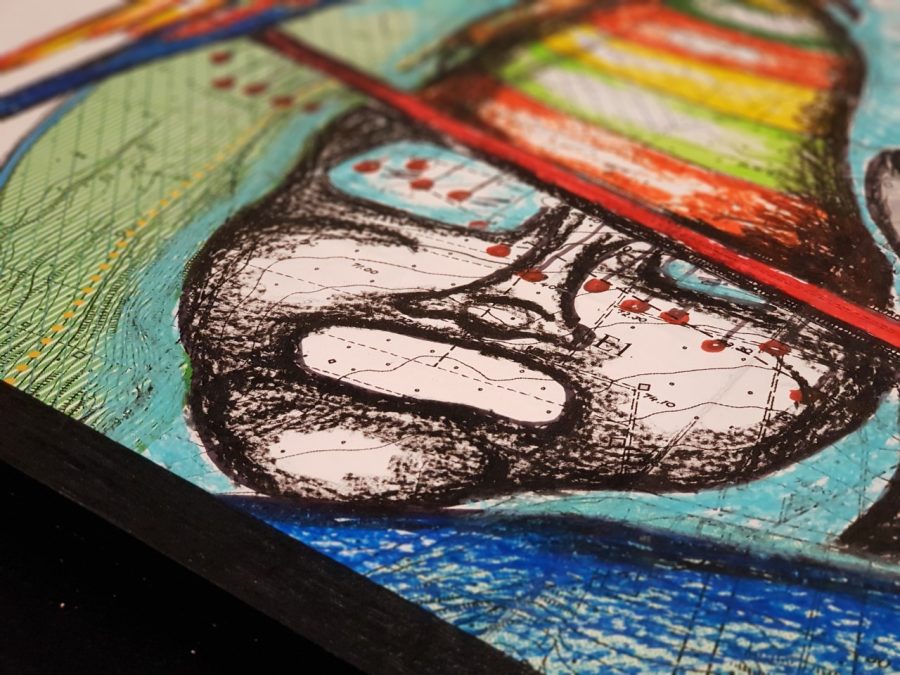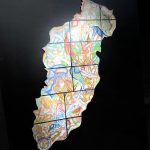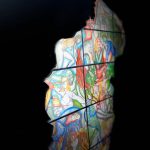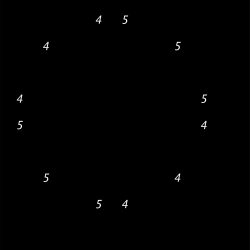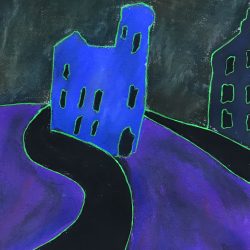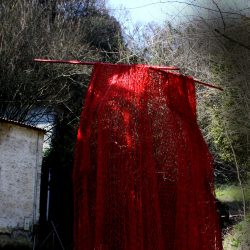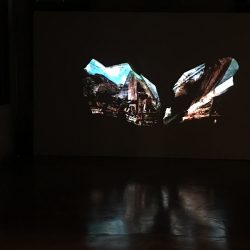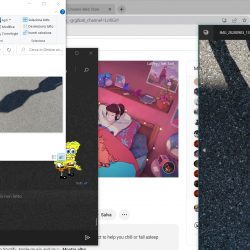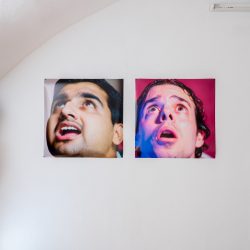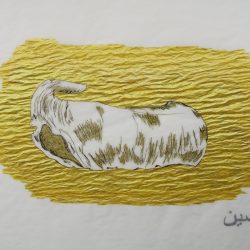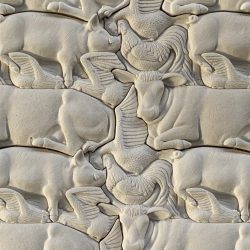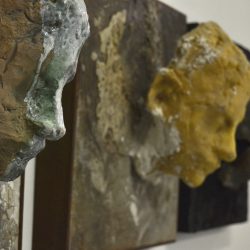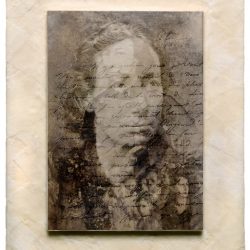work
niemandsland
| category | Drawing |
| subject | Political / Social |
| tags | |
| base | 270 cm |
| height | 530 cm |
| depth | 5 cm |
| year | 2009 |
Inverted, reflected and projected uranology, architecture and painting, these are the main elements that come together in a single type of visual art, ARCHI-PAINTING, a term coined by the architect and artist Carmelo Maria Carollo as early as 2003.
If a work of art itself contains a philosophy, it must necessarily arise like philosophy itself from uncommon uncertainties, questions and points of view, but which go beyond what can be scientifically assessed while remaining earthly in many respects.
The initial and main quid that brought C.M. Carollo to undertake an experimental path of fusion between different philosophies, types of art and subjects of study, was a reworking of poetic concepts in cosmological perception. The human being feels the need for poetry beyond reason, observing and transforming the elements of the macro and micro cosmos into a metaphor for his feelings ... perception in which the night sky, its stars and the moon are transformed into poetry. love, in solitude, in lack of love through words. At this point in the artist's reflection, Uranology takes over, which as a definition taken from the text "Grammar of the philosophical sciences" by Benjamin Martin of 1778, is the Discourse on bodies residing in heaven, a study that focuses on the ether of bodies celestial, it is for this reason that over the centuries and through every civilization the constellations take on more different appearances from animals to mythological figures. In the artist's considerations, today's concept of astrology translated into something else does not take over, but the concept of heaven as a poetic and interpretative projection remains firmly established. What if the sky was watching us? What would we see of us if we observed ourselves from above with the same perspective in which we observe celestial bodies?
The images taken from the Earth Observing System (Eos), from floor plans and maps, would in a certain sense be fictionalized by taking on the forms of our current poetic culture.
Obviously the architectural studies and the artistic trend lead C.M. Carollo, to reinterpret in a pictorial and poetic key what has always been and is intended as a purely technical material, such as the plans of a given territory and / or geographical maps.
In a certain sense, Arches - Painting becomes a philosophy of language, a subject in which all settled and urbanized societies, with a relative demographic density and a certain territorial extension, as long as they are in possession of writing, we see the formation of nuclei of 4 disciplines cardinals: mathematics, astronomy, law and grammar.
"The philosophy of language becomes a philosophy before language, this process makes language a transcendental identity." (Immanuel Kant, German philosopher)
It is therefore a question of explaining what the conditions of possibility of urban language are and how it specifically characterizes the human being.
GoldCaos has assembled the concepts of these various disciplines, bringing together the creative dynamics in a new perception of visual language from above ... technical tables (mathematics), which become astrology, the right of expression on one's own territory often denied, not understood and judged by the most mediocre minds, everything converges towards an artistic grammar made up of images, and not of mass words, while creating their own visions, on streets, houses, coasts, hills ...
The work Niemandsland bears a German name, giving credit to the language that best describes philosophy, thanks to the possibility of creating new concepts by associating two nouns in a single word, niemand (nobody) and Land (land), no man's land.
Our visual story, our characters, come to life on the plan of the master plan of Bagheria (Palermo, Sicily), our country of origin, and a city visited by the poet Johann Wolfgang von Goethe in 1787, who was impressed by the monsters of Villa Palagonia , which he unmistakably described and quoted in "The Walpurgis Night of Faust."
«To convey all the elements of the prince of Palagonia's madness, here is the list. Men: beggars of both sexes, Spaniards and Spaniards, Moors, Turks, hunchbacks, deformed men of all kinds, dwarves, musicians, puffins, old-fashioned soldiers, gods and goddesses, ancient French costumes, soldiers with giberne and gloves, beings mythological with comic additions (...) Beasts: isolated parts of the same, horses with human hands, human bodies with equine heads, deformed monkeys, numerous dragons and snakes, very varied paws and figures of all kinds, splitting and exchanging heads . Vases: all the varieties of monsters and cones ending in bellies of vases and pedestals. Imagine such figures galore, without sense and without reason, put together without choice or discernment, imagine these clogs and pedestals and deformities aligned as far as the eye can see: and you will experience the painful feeling that oppresses those who find themselves passing under the rods from this folly. (...) But the absurdity of a mind devoid of taste is revealed to the maximum degree in the fact that the cornices of the minor buildings are skewed, they hang to the right or to the left, so that the sense of the horizontal or of the vertical, which in short it makes us men and is the foundation of all eurythmy, it is tormented and tortured in us. And even these roofs are populated and decorated with hydras of small busts and orchestras of monkeys and other gimmicks. "
Our city is known for its villas, poets, artists such as Renato Guttuso and the director Giuseppe Tornatore (who tells in the film Baaria, mysticism, the symbols of our lowest cultural legacies, but also sanguine and passionate of a Bagheria of the past )
Our city and our urban, visual and most intimate language today is known to us artists, living in this territory full of indescribable beauty, but bastard at the same time. A country disfigured in beauty, corrupt, good and evil, the knight, a modern Don Quixote who dominates everything, maintaining the ideals of honesty, sinking his sword into the evil of this territory, the mother you are stupid and poisons perpetually pregnant, the prickly pear as a symbol of resistance to aridity and rampant provincialism, the fantastic and mythological figures, the police fighting against an invisible but stratified enemy like the jellyfish-shaped mafia and its unexpected poison , the sirens and their deceptive song, a spinning top head that turns and turns to stay still and never changing, death, the trinacria that recalls our gorgon that petrifies like Medusa and its beauty, Polyphemus, next to the self-portrait of the artist, personified also in the rider and in the motorcyclist, below a woman who tries to instill love from her lips, a vortex that could pull in if anyone, does not have the ideals to be able to r resist this system.
“Memory is a monster, you forget, it is not. Archive things, that's all. He keeps them for you, or hides them from you and calls them back for you to remember, at his will. You think you have a memory, but it is the memory that you have. " (John Irving, via a thirteenth of the soul)
The assembly of the individual boards forms an imaginary shoe, a symbol of a lost and undertaken path. The shoe as an archetype of the journey of one's life up to one's path of identification.
The type of drawing is almost cartoonish, to enhance the irony of the fate of this country, the almost childish figures are desired, reconnecting us to the doubt of the future of our children, the scenes take place on 13 tables, like a thirteenth of the soul ... fallen into the arms of Lucifer, struggling with the trinity of the existing but rare good. The work must be displayed horizontally, and not hung, the sense of the exhibition must also be very earthly. (We send images of the miniature of the complete work, as the work is not on display at the moment)
Techniques: printing of the Bagheria master plan, gluing with poster glue on wooden panels, drawing, painting, creation of the black panel, black painted forex base, black painted iron supporting structure
Material: paper, charcoal, oil bar colors, wood panel glue for posters, forex, iron pipes, black paint, clear gloss paint.
Dimensions:
Height: 5.30 meters
Width 2, 70 meters
Thickness: 5 cm
If a work of art itself contains a philosophy, it must necessarily arise like philosophy itself from uncommon uncertainties, questions and points of view, but which go beyond what can be scientifically assessed while remaining earthly in many respects.
The initial and main quid that brought C.M. Carollo to undertake an experimental path of fusion between different philosophies, types of art and subjects of study, was a reworking of poetic concepts in cosmological perception. The human being feels the need for poetry beyond reason, observing and transforming the elements of the macro and micro cosmos into a metaphor for his feelings ... perception in which the night sky, its stars and the moon are transformed into poetry. love, in solitude, in lack of love through words. At this point in the artist's reflection, Uranology takes over, which as a definition taken from the text "Grammar of the philosophical sciences" by Benjamin Martin of 1778, is the Discourse on bodies residing in heaven, a study that focuses on the ether of bodies celestial, it is for this reason that over the centuries and through every civilization the constellations take on more different appearances from animals to mythological figures. In the artist's considerations, today's concept of astrology translated into something else does not take over, but the concept of heaven as a poetic and interpretative projection remains firmly established. What if the sky was watching us? What would we see of us if we observed ourselves from above with the same perspective in which we observe celestial bodies?
The images taken from the Earth Observing System (Eos), from floor plans and maps, would in a certain sense be fictionalized by taking on the forms of our current poetic culture.
Obviously the architectural studies and the artistic trend lead C.M. Carollo, to reinterpret in a pictorial and poetic key what has always been and is intended as a purely technical material, such as the plans of a given territory and / or geographical maps.
In a certain sense, Arches - Painting becomes a philosophy of language, a subject in which all settled and urbanized societies, with a relative demographic density and a certain territorial extension, as long as they are in possession of writing, we see the formation of nuclei of 4 disciplines cardinals: mathematics, astronomy, law and grammar.
"The philosophy of language becomes a philosophy before language, this process makes language a transcendental identity." (Immanuel Kant, German philosopher)
It is therefore a question of explaining what the conditions of possibility of urban language are and how it specifically characterizes the human being.
GoldCaos has assembled the concepts of these various disciplines, bringing together the creative dynamics in a new perception of visual language from above ... technical tables (mathematics), which become astrology, the right of expression on one's own territory often denied, not understood and judged by the most mediocre minds, everything converges towards an artistic grammar made up of images, and not of mass words, while creating their own visions, on streets, houses, coasts, hills ...
The work Niemandsland bears a German name, giving credit to the language that best describes philosophy, thanks to the possibility of creating new concepts by associating two nouns in a single word, niemand (nobody) and Land (land), no man's land.
Our visual story, our characters, come to life on the plan of the master plan of Bagheria (Palermo, Sicily), our country of origin, and a city visited by the poet Johann Wolfgang von Goethe in 1787, who was impressed by the monsters of Villa Palagonia , which he unmistakably described and quoted in "The Walpurgis Night of Faust."
«To convey all the elements of the prince of Palagonia's madness, here is the list. Men: beggars of both sexes, Spaniards and Spaniards, Moors, Turks, hunchbacks, deformed men of all kinds, dwarves, musicians, puffins, old-fashioned soldiers, gods and goddesses, ancient French costumes, soldiers with giberne and gloves, beings mythological with comic additions (...) Beasts: isolated parts of the same, horses with human hands, human bodies with equine heads, deformed monkeys, numerous dragons and snakes, very varied paws and figures of all kinds, splitting and exchanging heads . Vases: all the varieties of monsters and cones ending in bellies of vases and pedestals. Imagine such figures galore, without sense and without reason, put together without choice or discernment, imagine these clogs and pedestals and deformities aligned as far as the eye can see: and you will experience the painful feeling that oppresses those who find themselves passing under the rods from this folly. (...) But the absurdity of a mind devoid of taste is revealed to the maximum degree in the fact that the cornices of the minor buildings are skewed, they hang to the right or to the left, so that the sense of the horizontal or of the vertical, which in short it makes us men and is the foundation of all eurythmy, it is tormented and tortured in us. And even these roofs are populated and decorated with hydras of small busts and orchestras of monkeys and other gimmicks. "
Our city is known for its villas, poets, artists such as Renato Guttuso and the director Giuseppe Tornatore (who tells in the film Baaria, mysticism, the symbols of our lowest cultural legacies, but also sanguine and passionate of a Bagheria of the past )
Our city and our urban, visual and most intimate language today is known to us artists, living in this territory full of indescribable beauty, but bastard at the same time. A country disfigured in beauty, corrupt, good and evil, the knight, a modern Don Quixote who dominates everything, maintaining the ideals of honesty, sinking his sword into the evil of this territory, the mother you are stupid and poisons perpetually pregnant, the prickly pear as a symbol of resistance to aridity and rampant provincialism, the fantastic and mythological figures, the police fighting against an invisible but stratified enemy like the jellyfish-shaped mafia and its unexpected poison , the sirens and their deceptive song, a spinning top head that turns and turns to stay still and never changing, death, the trinacria that recalls our gorgon that petrifies like Medusa and its beauty, Polyphemus, next to the self-portrait of the artist, personified also in the rider and in the motorcyclist, below a woman who tries to instill love from her lips, a vortex that could pull in if anyone, does not have the ideals to be able to r resist this system.
“Memory is a monster, you forget, it is not. Archive things, that's all. He keeps them for you, or hides them from you and calls them back for you to remember, at his will. You think you have a memory, but it is the memory that you have. " (John Irving, via a thirteenth of the soul)
The assembly of the individual boards forms an imaginary shoe, a symbol of a lost and undertaken path. The shoe as an archetype of the journey of one's life up to one's path of identification.
The type of drawing is almost cartoonish, to enhance the irony of the fate of this country, the almost childish figures are desired, reconnecting us to the doubt of the future of our children, the scenes take place on 13 tables, like a thirteenth of the soul ... fallen into the arms of Lucifer, struggling with the trinity of the existing but rare good. The work must be displayed horizontally, and not hung, the sense of the exhibition must also be very earthly. (We send images of the miniature of the complete work, as the work is not on display at the moment)
Techniques: printing of the Bagheria master plan, gluing with poster glue on wooden panels, drawing, painting, creation of the black panel, black painted forex base, black painted iron supporting structure
Material: paper, charcoal, oil bar colors, wood panel glue for posters, forex, iron pipes, black paint, clear gloss paint.
Dimensions:
Height: 5.30 meters
Width 2, 70 meters
Thickness: 5 cm



